Hybrid vs memory foam − what's the difference and which is best for you?
I set hybrid vs memory foam mattresses head to head to help you decide which mattress type suits your sleep style
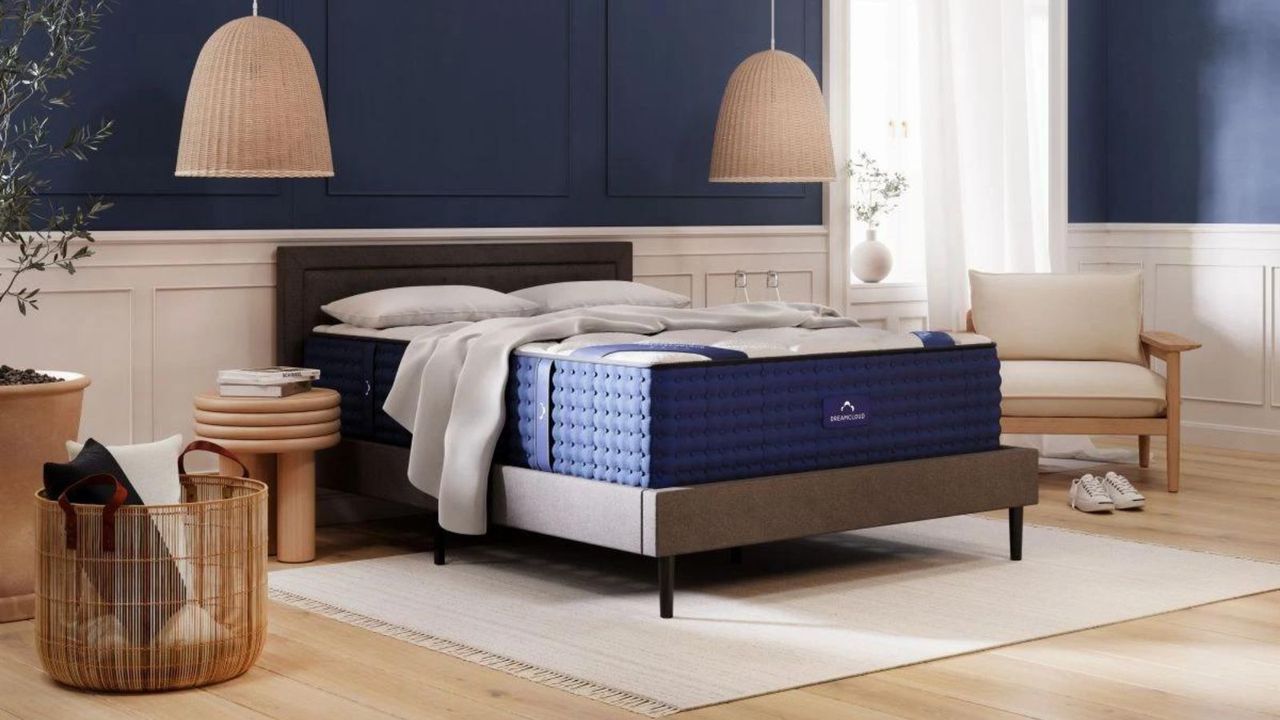

Hybrid and memory foam are two of the most popular mattress types in America. Memory foam offers motion isolation for couples and pressure relief for chronic pain, where hybrid mattresses combine the look and feel of foam with the airflow of an innerspring.
Which mattress type meets your needs depends on a host of factors, from how you tend to lie on the bed to whether you run warm or cool, as well as how much you're prepared to spend. To help you decide, I've evaluated hybrid vs memory foam mattresses.
As the resident Sleep Editor at Homes & Gardens, I lead a team of expert testers in the search to find the world's best mattress. Together, we've tested 30 models, including a range of hybrid and memory foam mattresses. I can tell you the pros and cons of each mattress type, drawing on my first-hand wisdom.
Hybrid vs memory foam – which is best for you?
Before we begin, let's define our terms. To help you visualize the difference between hybrid vs memory foam, I've picked out two of our top-rated models to use as examples. Don't worry if you encounter any unfamiliar terms: you can always cross-check against my mattress jargon buster.
Hybrid vs memory foam – what's the difference?
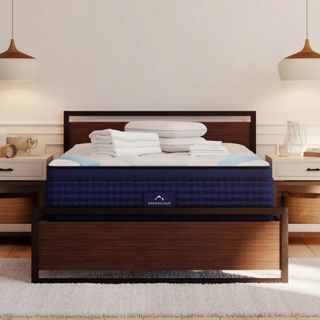
Comfort layer: Gel memory foam
Support core: Individually wrapped coils
+ Excellent edge support
+ Very breathable
- Some motion transfer
A hybrid mattress is springy and supportive, combining all the best bits of a memory foam mattress and a classic innerspring. Inside a hybrid mattress, you'll find a few inches of thick foam or luxe latex for plush comfort, alongside hundreds of steel coils for increased airflow.
The best hybrid mattress should suit all sorts of sleepers, whether they lie on their front, back, or sides. Your average hybrid mattress will feel firmer and sleep cooler than a memory foam model. That's good news for hot sleepers, and anyone who likes a firm surface, but less suitable for anyone who sleeps cool or longs for pressure relief.
Read the full review: DreamCloud Luxury Hybrid Mattress
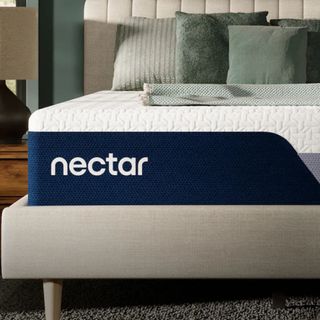
Comfort layer: Lower-density memory foam
Support core: High-density memory foam
+ Great for back pain
+ Excellent motion isolation
- Less breathable
A memory foam mattress is soft and supportive, filled with thick layers of polyurethane or viscoelastic foam. Originally invented by NASA, memory foam is designed to adapt to the shape, weight, and temperature of your body.
Most memory foam mattresses comprise a few layers of foam: support foam makes a solid base, while plush foam creates a nice, soft surface, and transition foam reduces friction between the layers. All that thick foam provides excellent pressure relief. I'd recommend a memory foam mattress to sleepers who suffer from chronic pain, and anyone who sleeps on their side.
Read the full review: Nectar Memory Foam Mattress
What you need to know about hybrids
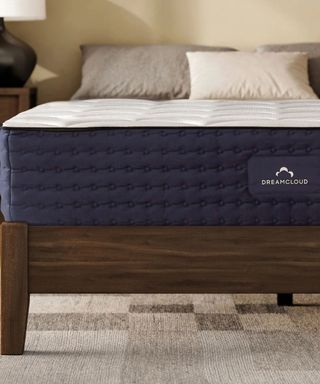
A hybrid mattress marries the plush comfort and pressure relief of memory foam with the edge support and airflow of an innerspring. Without knowing anything else about you, I'd recommend a hybrid mattress − it's sufficiently versatile to suit sleep positions.
Where a memory foam mattress tends to trap heat in its dense layers, hybrids are much more breathable. Beneath the foam comfort layer stands a support core of metal coils, which push air through the mattress as they contract and expand. Many of the best cooling mattresses are hybrids.
Your average hybrid mattress has reinforced coils around the sides for enhanced edge support. This makes it much easier to get into and out of bed if you struggle with mobility.
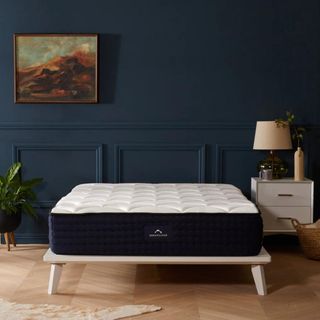
For a self-described 'luxury' mattress, the DreamCloud Luxury Hybrid is relatively affordable and often discounted in the mattress sales. According to expert tester Camryn Rabideau, this mattress falls on the firmer side: 'There's enough give that my hip and shoulder can sink in while sleeping on my side, but I never felt like I was being swallowed up.'
Read the full review: DreamCloud Luxury Hybrid Mattress
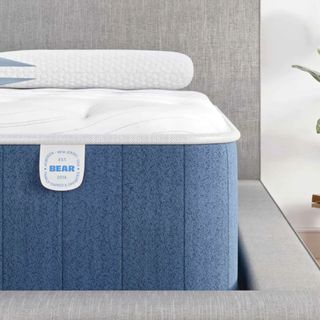
'The Bear Elite Hybrid Mattress ticks all my boxes,' says expert tester Alex Frost. 'This mattress is soft enough to cushion my joints and alleviate my aches and pains; it's supportive to maintain the natural alignment of your spine; and it's cool enough to suit hot sleepers and warmer weather.'
Read the full review: Bear Elite Hybrid Mattress
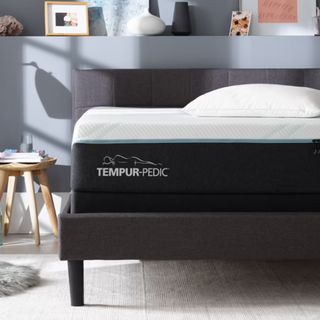
'I'd recommend the Tempur-Pedic ProAdapt Medium Hybrid Mattress for just about anybody,' says former Sleep Editor Jaclyn Turner. 'Whether you're a hot sleeper in search of the best cooling mattress or a side sleeper in need of pressure relief, this bed should cover all your bases. It's just a shame it's so expensive.'
Read the full review: Tempur-Pedic ProAdapt Mattress
Putting together this piece, I realized that your average hybrid mattress is seriously expensive: at least $1,000 for a Queen. The combination of materials and techniques inside a hybrid mattress, which marries foam and springs, makes it far more expensive than your average memory foam mattress. If you're buying on a budget, I'd encourage you to expand your search or wait for a sale.
The springs inside a hybrid mattress create a bit of bounce, which leads to motion transfer through your mattress. If you share a bed with a pet or partner who moves around a lot in the night, you might prefer a memory foam mattress with better motion isolation.
A hybrid mattress poses a few practical problems, too. For one thing, they're heavy: the metal inside the mattress makes it harder to lift, flip, or move from room to room. Even the sturdiest coils will start to stiffen over time, which means that your hybrid mattress might get noisier with age. If you tend to toss and turn in the night, you might struggle to sleep with all that squeaking.
What you need to know about memory foam
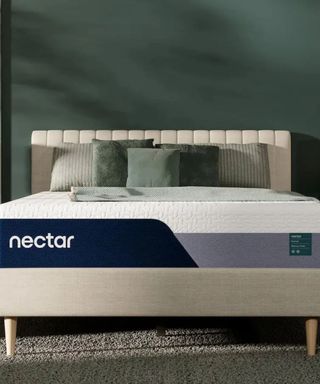
Let me be clear: you can't cure chronic pain with a memory foam mattress. With that said, our expert testers offer anecdotal evidence that memory foam can alleviate aches and pains and relieve pressure by cushioning your muscles and joints. It's not a coincidence that the best mattress for back pain is made from memory foam.
If you share a mattress, or you're a particularly light sleeper, you'll appreciate the enhanced motion isolation of memory foam. Developed by NASA to absorb the G-force of astronauts in space, memory foam is used to minimize motion transfer in mattresses.
Your average memory foam mattress is more affordable than a hybrid. The techniques are simpler and the materials are cheaper to source. It's no coincidence that five out of the six best affordable mattresses are made from memory foam.
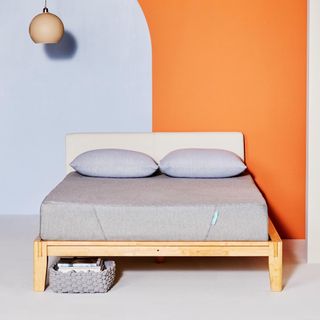
Out of the 30 models we've tested, the Siena Memory Foam Mattress is by far the most affordable. Expert tester Tonya Pendleton says, 'the Siena Memory Foam Mattress is proof that you get what you pay for. $399 for a Queen will get you solid support and optimal motion isolation, but it's not enough to afford proper edge support or cooling systems.'
Read the full review: Siena Memory Foam Mattress

'I live with fibromyalgia,' says expert tester Casey Clark. 'For a few hours each night, the Nectar Memory Foam Mattress made me forget about it. Filled with thick layers of dense foam, this mattress is made to absorb pain and relieve pressure so that I can sleep easy. I think the Nectar Memory Foam Mattress hits that sweet spot between comfort and support: it's neither too firm nor too soft.'
Read the full review: Nectar Memory Foam Mattress
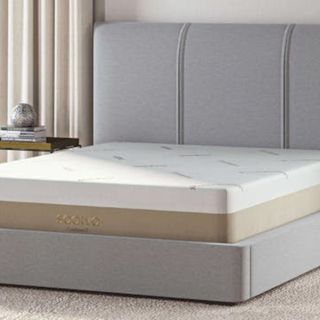
'After a whole summer testing, I'd put the Saatva Contour5 up there with the best cooling mattresses,' says expert tester Alex Frost. 'That's quite the feat for a memory foam model. A breathable cotton cover helps to keep you cool and dry, while airflow channels do the hard work to carry hot air away from your body and out of the mattress.'
Read the full review: Saatva Contour5 Mattress
Early iterations of memory foam were known to trap heat. Hybrids tend to be more breathable, since the springs push hot air through the mattress. If you're set on a memory foam mattress, but you struggle with night sweats or hot flashes, I suggest you opt for a gel memory foam model.
There's also the issue of mattress off-gassing. Memory foam is made from polyurethane, a spongy synthetic that contains a lot of volatile organic compounds, or VOCs. When these chemicals are released into the air, they create an unpleasant smell. I recommend you leave your memory foam mattress to air for a few days in a room with an open window before you try to sleep on it.
In my experience as a mattress tester, memory foam models often lack edge support. The soft squishiness of the center extends around the sides and it's harder to sit or sleep on the edge of the mattress. Your average hybrid or innerspring mattress features superior edge support.
If you share a bed or you're buying on a budget, I suggest you shop for a memory foam mattress. If you're a hot sleeper, or you prefer a slightly firmer surface, you'll be better off with a hybrid mattress.
Sign up to the Homes & Gardens newsletter
Design expertise in your inbox – from inspiring decorating ideas and beautiful celebrity homes to practical gardening advice and shopping round-ups.

Emilia is our resident sleep writer. She spends her days tracking down the lowest prices on the best mattresses and bedding and spends her nights testing them out from the comfort of her own home. Emilia leads a team of testers across America to find the best mattress for every sleep style, body type, and budget.
Emilia's quest to learn how to sleep better takes her all around the world, from the 3Z mattress factory in Glendale, Arizona to the Hästens headquarters in Köping, Sweden. She's interviewed luxury bedding designers at Shleep and Pure Parima, as well as the Design Manager at IKEA. Before she joined Homes & Gardens, Emilia studied English at the University of Oxford.
You must confirm your public display name before commenting
Please logout and then login again, you will then be prompted to enter your display name.
-
 Chrissy Teigen's rich living room textures infuse her earthy color scheme with life – it's the best take on warm neutrals I've ever seen
Chrissy Teigen's rich living room textures infuse her earthy color scheme with life – it's the best take on warm neutrals I've ever seenWood, boucle, and mixed metals bring a cozy, organic vibe to the model's brown and green living room, and it's transformed my approach to color
By Sophie Edwards Published
-
 Best teal paints – 8 favorite shades among designers from Benjamin Moore, Farrow & Ball, and more
Best teal paints – 8 favorite shades among designers from Benjamin Moore, Farrow & Ball, and moreFrom deep and dark teals to lighter tones, these are designers' favorite teal paints
By Emily Moorman Published
-
 Sleep trends to try in 2025 – from sleep divorce to sleep retreats and everything in between
Sleep trends to try in 2025 – from sleep divorce to sleep retreats and everything in betweenI asked an expert panel of product designers, medical professionals, and sleep scientists whether popular and emerging sleep trends really work
By Emilia Hitching Last updated
-
 What is green sleep? Experts explain this better sleep trend
What is green sleep? Experts explain this better sleep trendOur sleep editor tried the 'green sleep' trend, here's everything you need to know, including what it means and whether it works
By Louise Oliphant Published
-
 I'm a sleep editor and The 'Emma Shleep experience' changed the way I rest
I'm a sleep editor and The 'Emma Shleep experience' changed the way I restAfter a night of sleeping under the stars with Emma the sleep company, I decided to switch up my sleep routine – here's how I get my best sleep yet
By Louise Oliphant Published
-
 How mattress warranties work – everything you need to know
How mattress warranties work – everything you need to knowI asked a mattress salesman to explain how mattress warranties work, what they do and don't cover and how to file a claim if your bed breaks
By Emilia Hitching Last updated
-
 How to test a mattress − at home or in store
How to test a mattress − at home or in storeI asked mattress manufacturers and certified sleep experts how to test a mattress for the best night's sleep
By Emilia Hitching Last updated
-
 How to break in a mattress − expert tips from mattress testers
How to break in a mattress − expert tips from mattress testersI spoke to mattress manufacturers and sleep scientists to learn how to break in a mattress for better sleep on a time crunch
By Emilia Hitching Last updated
-
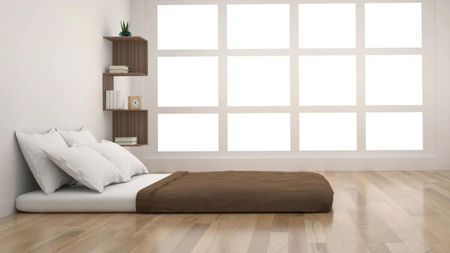 Should you put a mattress directly on the floor? Experts outline the pros and cons
Should you put a mattress directly on the floor? Experts outline the pros and consI spoke to mattress manufacturers and sleep scientists to find out whether it's ever a good idea to put a mattress directly on the floor
By Emilia Hitching Last updated
-
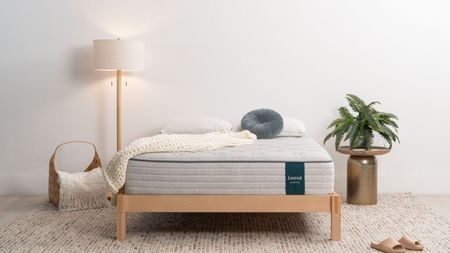 What is the best mattress firmness? How to find your ideal fit and feel
What is the best mattress firmness? How to find your ideal fit and feelI asked physical therapists and sleep scientists to talk me through the pros and cons of mattress firmness ratings for different sleep styles
By Emilia Hitching Last updated